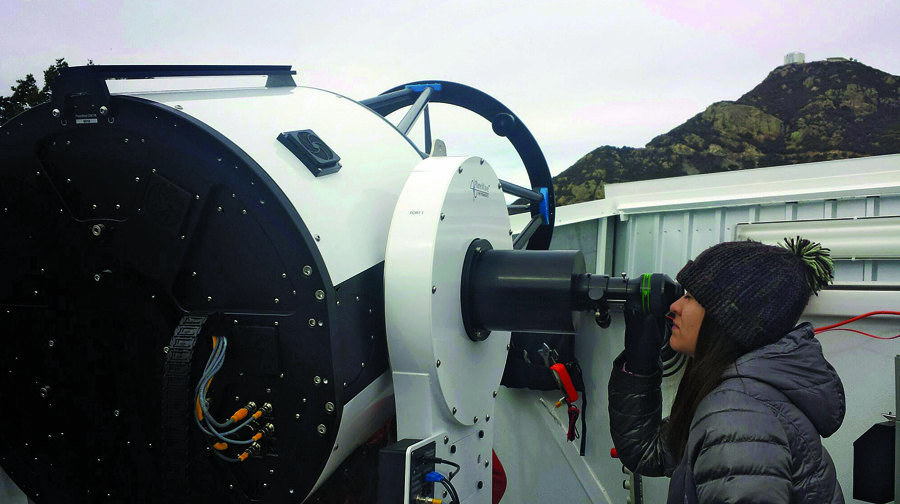- Editorial Offices
- 325 Brantly Hall
- Missoula, MT 59812
- (406) 243-2488
- themontanan@umontana.edu
- Icons By Maria Maldonado
UM’s new telescope offers students the opportunity to reach for the stars

“First light” marked a new dawn for University of Montana astronomy on December 16, 2014.
That day, UM Associate Professor of Astrophysics Nate McCrady, along with a team of researchers, achieved “first light,” a term used to describe successfully taking first observations from a telescope.
McCrady traveled from Missoula to Mount Hopkins, Ariz., to oversee the installation of UM’s new 0.7-meter telescope by crane at the Fred Lawrence Whipple Observatory.
The UM-owned telescope is part of Project MINERVA, a multi-telescope observatory designed to hunt for rocky planets similar to Earth around nearby stars. The project involves four telescopes, each worth about $250,000 and owned by different institutions.
With 0.7-meter collecting mirrors, the telescopes work together—flying in formation—to create the light-gathering power of a telescope with a 1.4-meter mirror that would cost several million dollars.
The telescope owners are UM, Harvard, Penn State, and the University of New South Wales in Australia. The Australian university also successfully installed its telescope in December.
“It’s a pretty exciting time for the astronomy program at UM,” McCrady says. “Our students are shoulder-to-shoulder with Penn State and Harvard, and they’re doing a lot of the work. UM undergrads are playing a central role in the development of the facility.”
With the telescopes owned by Harvard and Penn State slated to be installed at the beginning of May, UM’s telescope has been in use almost every night since mid-February.
“It’s the UM telescope that’s doing the lion’s share of the work right now,” McCrady says.
The telescopes are housed 7,600 feet above sea level at the Whipple Observatory, which was selected as the site because it offers an average of 300 clear nights a year for observation.
After an initial testing phase, McCrady and his team started analyzing data, which the telescope captures robotically. The nightly observer rotation includes five UM undergrads, as well as colleagues from partner institutions. These students operate the telescope remotely from McCrady’s lab on campus.
“Student observations have been really instrumental in identifying problems with the software during testing,” McCrady says.
Harvard and Penn State paid for their telescopes directly, while UM received a $1.125 million NASA grant to fund Montana’s telescope and three years of research.
The MINERVA team plans a formal dedication May 18 in Arizona. All four telescopes will be in place at the event, and representatives from each partner institution will attend.